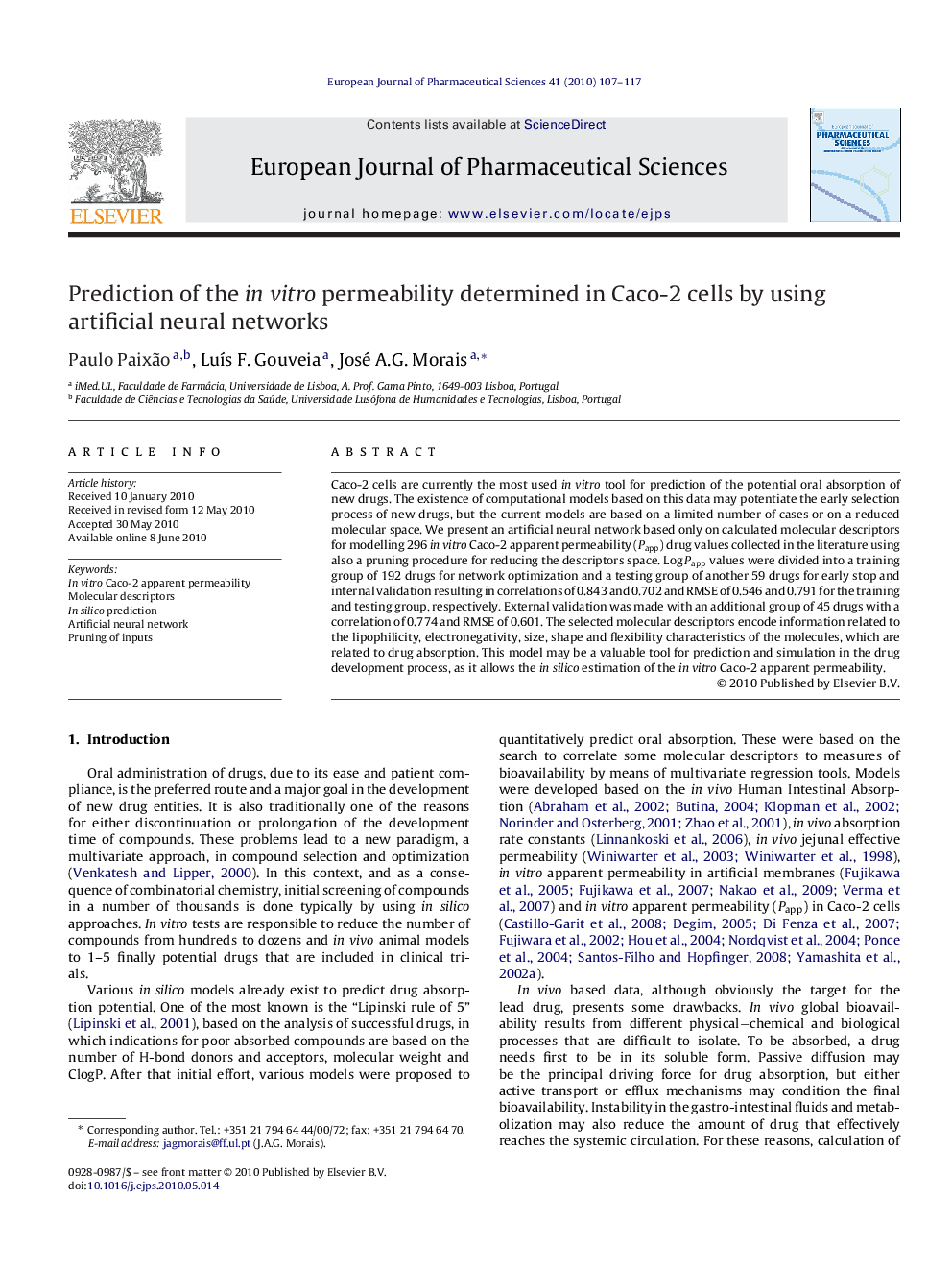| Article ID | Journal | Published Year | Pages | File Type |
|---|---|---|---|---|
| 5810224 | European Journal of Pharmaceutical Sciences | 2010 | 11 Pages |
Caco-2 cells are currently the most used in vitro tool for prediction of the potential oral absorption of new drugs. The existence of computational models based on this data may potentiate the early selection process of new drugs, but the current models are based on a limited number of cases or on a reduced molecular space. We present an artificial neural network based only on calculated molecular descriptors for modelling 296 in vitro Caco-2 apparent permeability (Papp) drug values collected in the literature using also a pruning procedure for reducing the descriptors space. Log Papp values were divided into a training group of 192 drugs for network optimization and a testing group of another 59 drugs for early stop and internal validation resulting in correlations of 0.843 and 0.702 and RMSE of 0.546 and 0.791 for the training and testing group, respectively. External validation was made with an additional group of 45 drugs with a correlation of 0.774 and RMSE of 0.601. The selected molecular descriptors encode information related to the lipophilicity, electronegativity, size, shape and flexibility characteristics of the molecules, which are related to drug absorption. This model may be a valuable tool for prediction and simulation in the drug development process, as it allows the in silico estimation of the in vitro Caco-2 apparent permeability.
